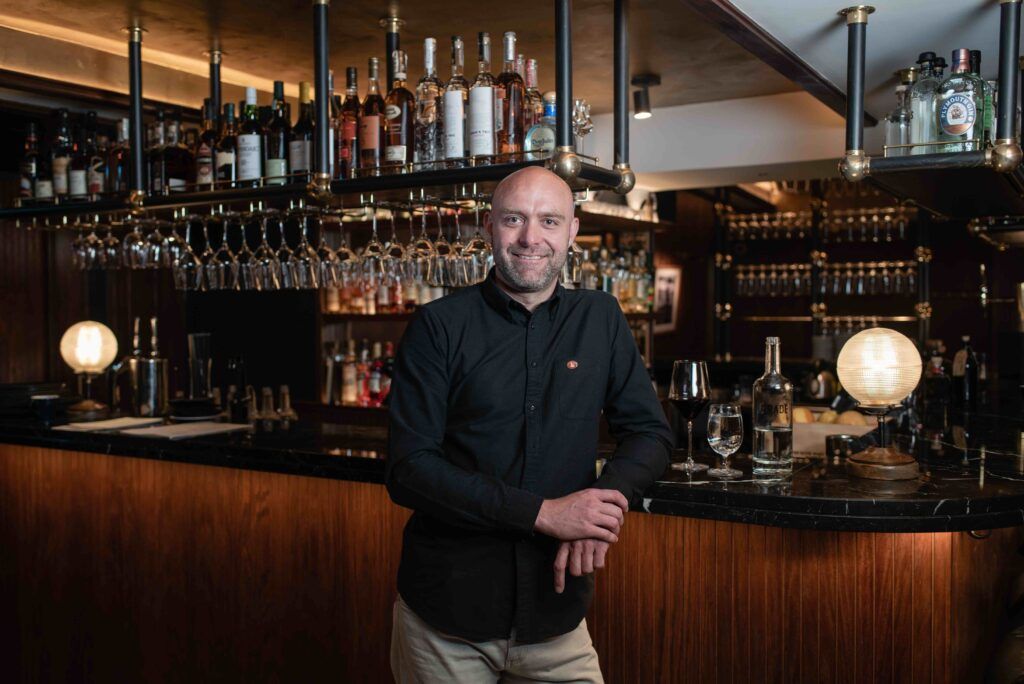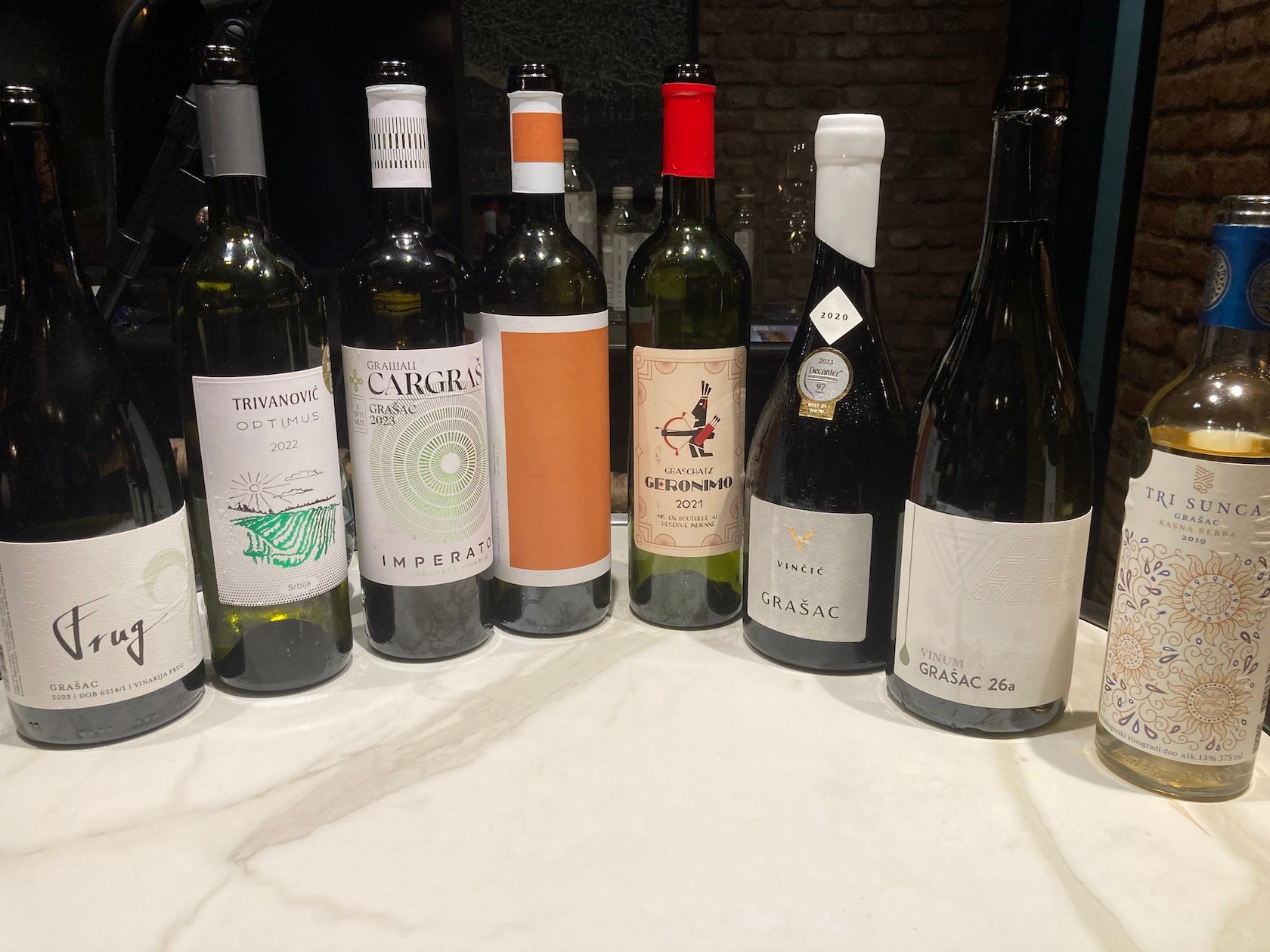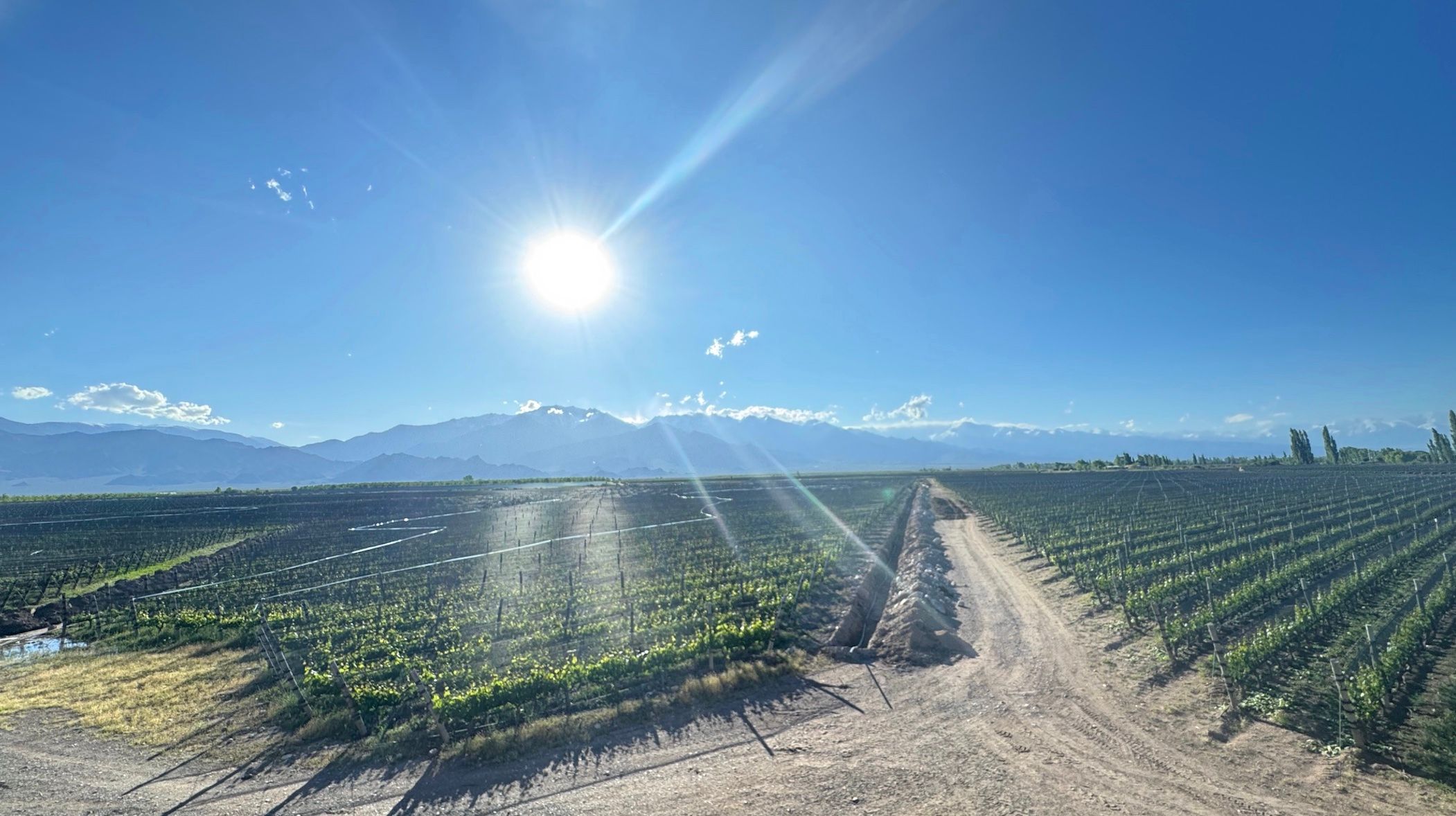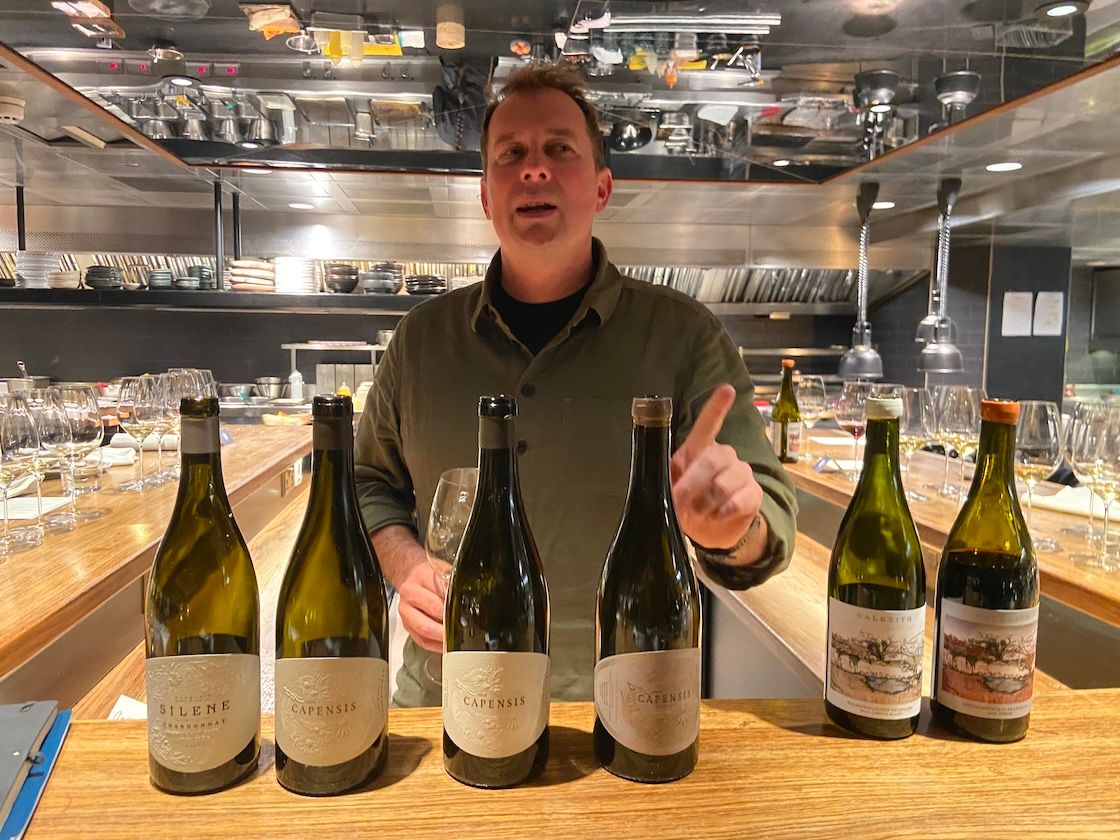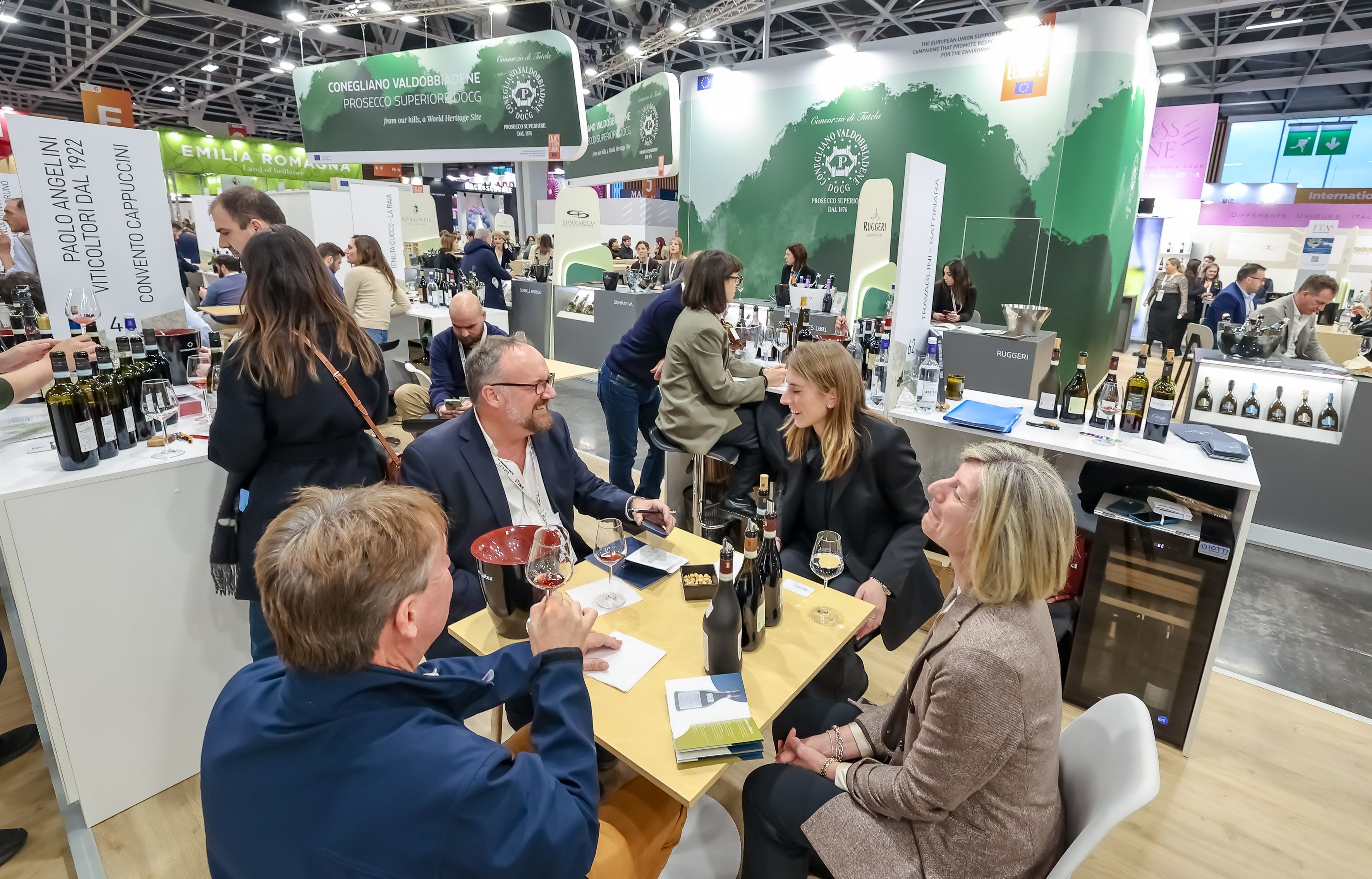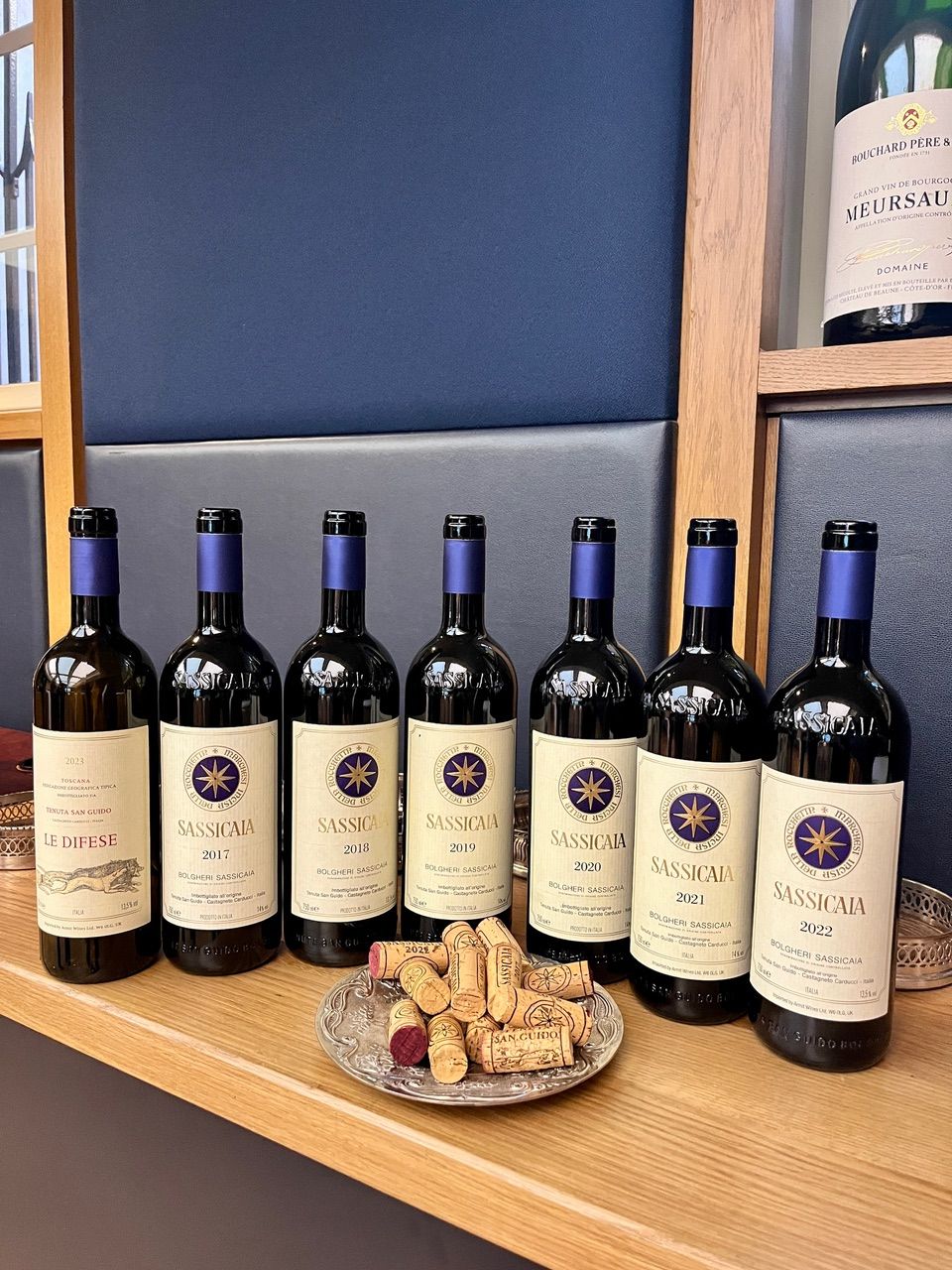Our thanks go to our buyers’ panel which included: Sarah Knowles MW, wine buyer, The Wine Society; Beth Willard, buying director, Winetraders; Shane McHugh, group wine buyer, Goodman Restaurants; Andrea Briccarello, business development manager, Jascots Wine Merchants; Daniel Grigg, managing director, Museum Wines. They were joined by Tony Fink, owner, Donna Elvira Wines and Nina Cerullo, wine educator, Donna Elvira Wines, to give a personal take on the wines of Campania.
You can read the first part of our report here.
(You can watch the full recording of the debate here)
As well as sharing their insights and experience of buying wine from Campania and southern Italy our panel of buyers also had the chance to taste through the premium range of white and red wines from Donna Elvira, a family owned independent producer, perched high up in the unique growing area of Irpinia, blessed with volcanic soils from Mount Vesuvius. It was also an opportunity for them to set out how each of the varieties tasted might best work in the UK market.If you would like to taste the wines then you can do so by contacting its new UK wine agency, Propeller and corinne@propeller.wine.
Wine 1
Donna Elvira Fringilla DOC Irpinia Falanghina 2019 (RRP £15.99)
Nina Cerullo says the first thing to say about Falanghina is that, yes, it does have similar characteristics to Pinot Grigio, “but it has a lot more flavour and the acidity levels make it perfect with food”. For her it is the ripe pear flavour combined with the “full mouth feel that makes it such a popular grape”. “It’s just a lovely, friendly wine and is a real pleasure to drink.”
For the trade it is also a style of wine that offers more complexity after a year or two, but is also nice and refreshing “straight from the barrel,” says Cerullo.
Part of the Donna Elvira approach, which it follows through on its other white wines, is to leave the wine on lees for a while. Typically the Falanghina will have five months on lees, a few months in bottle and are then released into the market within around a year of picking.
Beth Willard says she certainly appreciated the deeper, richer, more complex style that came through in the 2019 vintage that the panel tasted and could see how the wine benefits from that extra year of ageing.
Part of that richness, stresses Cerullo, also comes from the terroir and the slightly higher altitude of 400m where the grapes are grown, with the minimum of intervention in terms of spraying, which makes a difference. The grapes also benefit from the cold nights, and hot days that are also typical in Campania.
Daniel Grigg, at Museum Wines, is a big fan of Falanghina, but often finds it hard to track any down from his regular suppliers. “This is why I am so interested in trying these wines as they are ones I have a personal enthusiasm for, but whenever I have tried to source them I have come up short,” he says.
McHugh says he sometimes finds Falanghinas can “lack a bit of weight and be one dimensional” but he found the Donna Elvira wine “absolutely delicious with lots of texture, roundness and a little touch of salinity at the end of it”.
Wine 2
Donna Elvira Aegidius Greco di Tufo DOCG 2019 (RRP: £16.99)
(Click here for Jascot’s Andrea Briccarello on how Campania wines work so well for sommeliers)
Greco is another one of Campania’s native varieties and Cerullo says it very much suits the tufaceous soils of Irpinia in the region which she claims gives the Greco di Tufo style, in particular,more “minerality” and “backbone” that you might find in other areas of southern Italy.
The Donna Elvira Greco di Tufo – which Fink claims is the only one to be made in Campania DOCG – can be characterised by its strong “salinity, almost stoney character with a beautiful backbone and richness,” says Cerullo which she describes as “an absolute sommelier’s dream because it has beautiful acidity, minerality and a lot of fruit flavour”.
Again the high altitude and cold nights, coupled with winds coming down from the Balkans and in from the sea all combine to keep the grapes fresh and packed with that vital acidity which results in a long, slow ripening period.
It’s that salinity that really stood out to Daniel Grigg, which he found even more pronounced than on the Falanghina. “A wine will have me at their mercy if I detect any salinity,” he says. Which this most definitely does. He says it is a classic example of Greco di Tufo.
Briccarello says tasting these grape varieties takes him back to opening Bentleys Oyster bar where these styles were his “main features on the list”. “Particularly the Greco. It is a delicious wine with oysters and shell fish in general.” He adds: “These wines are meant to be on any wine list. It does not matter if you have shellfish or not.”
He particularly liked the “beautiful salinity and acidity” in the Greco di Tufo wine. “There is nothing else like this in Italy. They are very unique to this area. As an Italian I am very proud to have such a variety.”
Knowles says she particularly looks for “intensity on the mid palate” when tasting Greco and the Donna Elvira wine certainly has that where the “fruit helps to balance out the salinity”. “Our members really enjoy a wine that has that balance, between the fruit and the salinity and the minerality”. “It makes it very food friendly,” she adds.
McHugh says this is the sort of Greco he looks for as many of the starters at Goodman are shellfish based and it is a wine that allows him to give his guests something a little different to what they are used to or might expect.
Wine 3
Donna Elvira Fink Fiano di Avellino DOCG 2019 (RRP: £16.99)
(Click here for Donna Elvira’s Nina Cerullo on what makes Fiano stand out)
Fiano is another of the classic southern Italian grape varieties that are really coming into their own. Cerullo says it usually stands out more as a grape variety with a waxy texture backed up by “mouth feel and lovely sweetness of fruit on the nose and on the palate”.
The Fianos where Donna Elvira is in Iprinia are very different, she adds, to those produced by the coast or in Puglia. For a start, stresses Fink, it come from what he claims is the only DOCG area in Italy that is producing Fiano, thanks thanks [repeated word] to the unique volcanic soils – courtesy of Mount Vesuvius – that help balance out any waxy texture and give the wines its crucial acidity.The result is more peachy, with touches of pineapple on the palate, says Cerullo.
“It’s a real pleasure drinker and because it has so much fruit character on the nose and palate it can take on some stronger food flavours,” she adds.
It is also a style of wine that does particularly well with modern winemaking. “It can be quite tricky in the cellar if you are not careful with fermentation temperatures and keeping the oxygen away from it. Modern winemaking has helped enormously with that. So the quality is very different to what it was 30 to 40 years ago,” she adds.
Knowles is quick to say how much he likes this particular style of Fiano. “It’s a lovely wine and has that subtlety and intensity and is very much a foodie wine and we could talk for hours about it, but equally it does not hit you over the head with its oak or high aromatics. So there is some work to do as the more subtler wines need more explanation.”
McHugh found the Fiano “delicious, really fantastic and shows the diversity of whites from Campania”. He particularly liked the opportunity to be able to taste the three white varieties together: “This is a fantastic exercise to see them side by side and how they deliver in very distinctive ways.”
Briccarello feels Fiano has the biggest potential for ageing out of the white varieties and to see how it develops over a few years.
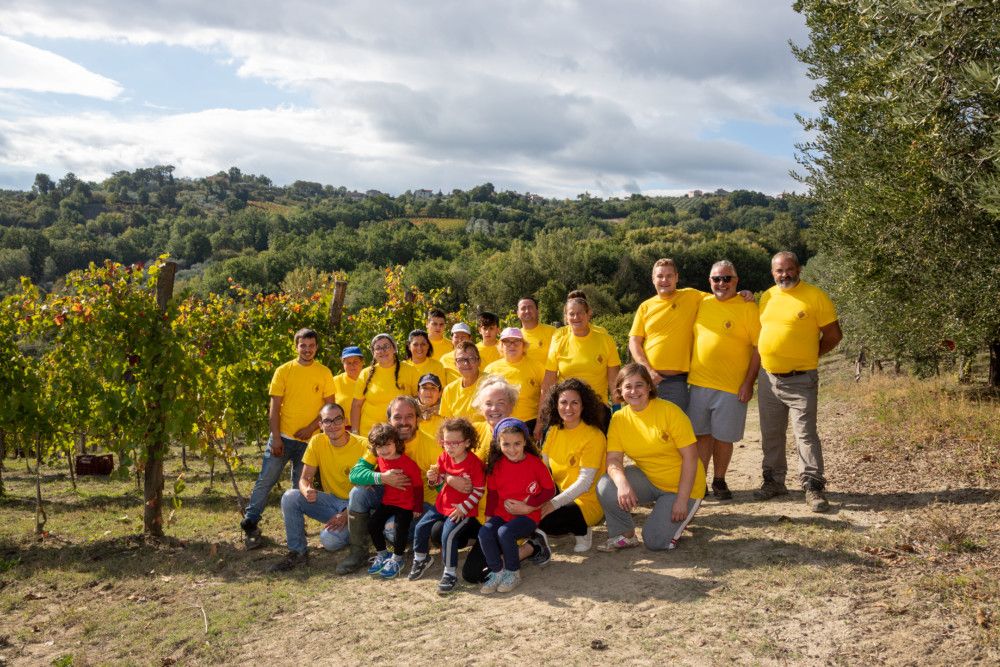
The close knit Donna Elvira team
Wine 4
Donna Elvira KaySara Irpinia Rosato DOC 2019 (RRP: £15.99)
The Rosato style comes from the Aglianico black grape variety that is native to southern Italy and again does particularly well in Campania. Cerullo says it has a reputation for being one of the best quality red grape varieties in Italy “as it always produces quite extraordinary fruit character, with superb acidity, very good length and tannic structure”.
To make its Rosato style Donna Elvira picks particular grapes early from certain sites in the vineyard and direct presses the grapes for around five to six hours, taking care not to take too much of the tannic structure out of the wine.
It is that fresh berry, fruit character that is the key characteristic of this wine, adds Cerullo, with enough acidity and structure to make it a great food wine as well. Ideal, she says, with a seared tuna steak.
“This is the wine that I had with my dinner last night,” says Willard who had tasted the wine the day before the session. “I particularly liked it and thought it was more foodie rosé. I like the colour and concentration and the combination of acidity, so that it is super fresh and lively and a good sense of where it comes from.”
Grigg recommends putting the wine in a clear bottle as it is hard to see what is actually a “beautiful” coloured wine in what is a dark bottle. “The wine is fantastic and the suggestion of a seared tuna steak has got me very excited indeed. I look for rosés that can be paired with food and don’t just disappear into nothing as soon as they are matched with any flavour. I think this wine could be paired with almost anything. It’s really good.”
Fink says rosés are not that common in Campania, but his winemakers were keen to show what the Aglianico grape could do. It’s also his wife’s favourite wine which is apt as the wine “Kaysara” is named after Kay (his wife) and Sara (his daughter).
Wine 5
Donna Elvira Settemazze Irpinia Aglianico DOC 2018 (RRP: £15.99)
Cerullo is keen to address what she sees as a bit of a reputation about Aglianico that it needs 10 to 20 years before you can drink it. That might have been the case in the past, but modern viticulture and winemaking has really helped the variety with green harvesting, cane pruning, canopy management to allow the grapes to access the sun in a way that allows the tannins to ripen fully in the grape before picking. The key, she adds, is to get the phenolic and tannic ripeness right before they are picked.
Then in the winery it is treated very differently and bunches are no longer all thrown in together, but carefully selected, destemmed and diligently put together. “It is a very gentle way of producing Aglianico now,” she says.

The volcanic soils in the Donna Elvira vineyards help give its wines their complexity
All of which means it can be drunk far younger, yet still has the structure and tannins, and crucially the fruit that makes it “approachable and accessible”. For Cerullo this is an Aglianico that has “savoury texture, beautiful minerality, lovely acidity, a superb finish and with tannins that are ripe but approachable”. And again great with food, particularly meats and strong cheeses, added Fink.
Briccarello agrees that Aglianico has been unfairly stigmatised in the past, but he is very much a fan. “I absolutely adore Aglianico. I think it is a very good variety to have on any wine list. We do three different Aglianicos on our list. You can have them in different styles. It’s a bit like a chameleon. It’s a variety to have with lamb chops, stews, cuts of beef or strong cheese. It is an alternative to a Bordeaux or a Cabernet Sauvignon. Its rusticity and tannins makes it much more pleasurable and ideal.
“It’s impossible not to like. It’s got everything you want from a red wine. It’s got structure, tannins, depth, texture and complexity. It’s just a matter of exploring it giving the opportunity to the customer.”
McHugh agrees and says this is a style of wine a Goodman customer would love “all day”. “It delivers on all fronts. The approachability of this wine is what will make it so versatile. The fruit character is so lovely and supple and it has acidity and that lovely earthy characteristic. We do a lot of aged cuts on the bone and this will work well with that. We also have our corn fed meat which is a bit sweeter and the earthy side of the wine will give it a bit of ying and a yang.”
Grigg admits he comes across Aglianico rarely even in his role running an independent wine merchant. In fact he narrows it down to about five times from all the thousands of wines he has tasted in his professional career. But says this is the style of Aglianico that would make him seek it out a lot more.
“This is fantastic, really approachable and only 13.5% alcohol which is great to have a red wine from Italy at that sort of level. This would be a perfect alternative to Malbec on a restaurant wine list,” he says. “Providing you have got someone who can hand sell it you will sell a lot of it as it is so approachable and no-one is going to push a glass away and say I am not drinking that.”
He says this is very much the kind of wine that people will come back for at less than £20 in a shop.
Knowles says the Wine Society has done well with a number of Aglianicos that have been sourced from across southern Italy, and not just specifically Campania. In fact it is just about to put out a special mailer promotion featuring some of the Aglianicos in its range.
“Our members have taken to it very happily and it goes really well with great steaks and a Sunday roast. I think there is real keenest to explore this grape variety. There is real scope for expansion.”
In summary
(Click here for UK buyers summarising the potential for Campania wines in the UK featuring Jascot’s Andrea Briccarello, The Wine Society’s Sarah Knowles MW and Daniel Grigg of Museum Wines)
Overall the panel were really impressed both with the wines they were able to taste, but also the wider potential and opportunity there is for the Campania region to grow and go to the next level.
Willard sums up its appeal as its “approachability” and the fact “we are talking about serious wines, with real pedigree and great terroir, but they are really approachable and quite easy for consumers to understand”.
She says “linking the wines to the region as a whole and the food is a much more holistic approach” backed up by some education in the trade, but to really cut through there is probably a “consumer piece” to look at as well so that they can better understand the different grape varieties. “Once they have got the glass in their hand, it is an easy sell,” she says.
Knowles completely agrees and sees Campania’s future very much in producing “approachable” wines from a region that can only become more popular as a tourist destination for food and wine. “The imagery of Campania is a key thing and then being able to focus on the grapes and connecting them to the unique terroirs that have “been singled out as DOCG worthy is an important differentiator for Campania”.
Willard was also keen to complement the Donna Elvira team for their packaging and labels for each of the wines in the range. “The packaging helps differentiate these wines really nicely and having different bottle shapes is really important for customers as well in helping them to differentiate between different styles and price points. The labels and bottle shapes are really eye catching.”
Briccarello believes the region has “great potential” particularly for the “steely, minerally, cirtusy, salty whites” and the “robust, savoury, earthy” reds. “I think we cover everything in terms of quality and styles and it’s time to ditch the Pinot Grigios and just put in front of a customer a glass of Greco or Fiano,” he adds. That’s what really makes a difference. Getting people to taste the wines for themselves and watch them come back and order again and again.
For Daniel Grigg it is all about shouting as wide and loud as you can about how great these wines are, like getting the wines on BBC’s Saturday Morning Kitchen and out to as many people as possible.
“People are more likely to buy the wines if they are given that sort of backing,” he says. “Getting the wines say on Joe Wadsack’s Drinks Coach YouTube channel. We have had some of our wines on his show and we do get sales from it. It’s someone being passionate, enthusiastic about the wines who can put their celebrity stamp on a Campania wine and coerce people away from Pinot Grigio.”
McHugh says the main takeaway is simple enough. It’s down to the buyers in their various positions to go out there and “spread the word” about how good these wines are.
- If you would like to taste the wines then you can do so by contacting Corinne O’Connor at corinne@propeller.wine.
- To find out more go to the Donna Elvira Wines website here.
- You can read the first part of the report here.

